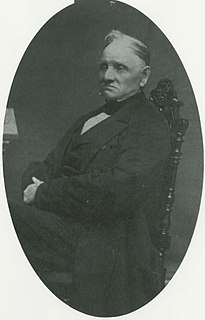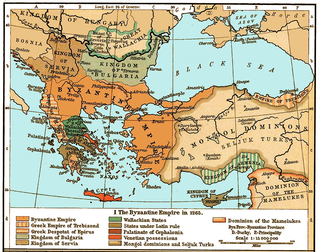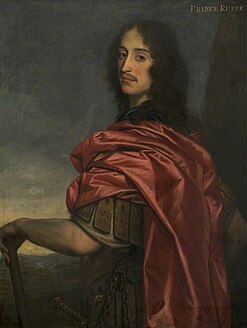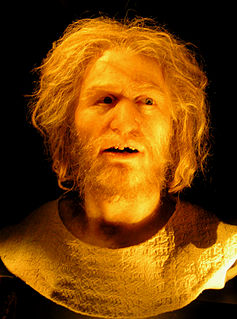 W
WBuccaneers were a kind of privateers or free sailors peculiar to the Caribbean Sea during the 17th and 18th centuries. First established on northern Hispaniola as early as 1625, their heyday was from the Restoration in 1660 until about 1688, during a time when governments were not strong enough and did not consistently attempt to suppress them.
 W
WA privateer is a private person or ship that engages in maritime warfare under a commission of war. Since robbery under arms was a common aspect of seaborne trade, until the early 19th century all merchant ships carried arms. A sovereign or delegated authority issued commissions, also referred to as a letter of marque, during wartime. The commission empowered the holder to carry on all forms of hostility permissible at sea by the usages of war. This included attacking foreign vessels and taking them as prizes, and taking prize crews as prisoners for exchange. Captured ships were subject to condemnation and sale under prize law, with the proceeds divided by percentage between the privateer's sponsors, shipowners, captains and crew. A percentage share usually went to the issuer of the commission.
 W
WBuccaneers were a kind of privateers or free sailors peculiar to the Caribbean Sea during the 17th and 18th centuries. First established on northern Hispaniola as early as 1625, their heyday was from the Restoration in 1660 until about 1688, during a time when governments were not strong enough and did not consistently attempt to suppress them.
 W
WHayreddin Barbarossa, also known as Hızır Hayrettin Pasha, and simply Hızır Reis , was an Ottoman corsair and later admiral of the Ottoman Navy. Barbarossa's naval victories secured Ottoman dominance over the Mediterranean during the mid 16th century.
 W
WStede Bonnet was an early eighteenth-century Barbadian pirate, sometimes called "The Gentleman Pirate" because he was a moderately wealthy land-owner before turning to a life of crime. Bonnet was born into a wealthy English family on the island of Barbados, and inherited the family estate after his father's death in 1694. In 1709, he married Mary Allamby, and engaged in some level of militia service. Because of marital problems, and despite his lack of sailing experience, Bonnet decided he should turn to piracy in the summer of 1717. He bought a sailing vessel, named it Revenge, and travelled with his paid crew along the Eastern Seaboard of what is now the United States, capturing other vessels and burning other Barbadian ships.
 W
WHippolyte Bouchard, or Hipólito Bouchard, was a French-born Argentine sailor and corsair who fought for Argentina, Chile, and Peru.
 W
WCampuzano Polanco was a prominent family from the colony of Santo Domingo with origins in Santiago de los Caballeros. During the colonial era of the Hispaniola, their members and descendants went on to occupy high political, military and ecclesiastical positions, locally and outside the Island, as well as in the metropolis of Spain. Their merits extend since the beginning and until the end of the colony.
 W
WKlemen Andersen "Skipper Clement" was a Danish merchant, captain, privateer and leader of the peasant rebellion that was part of the civil war known as the Count's Feud.
 W
WEnos Collins was a merchant, shipowner, banker and privateer from Nova Scotia, Canada. He is the founder of the Halifax Banking Company, which eventually was merged with the Canadian Bank of Commerce in 1903. Upon his death, he was acclaimed as the richest man in Canada.
 W
WAlonso de Contreras, was a Spanish sailor, soldier, privateer, adventurer and writer, best known as the author of his autobiography; one of the very few autobiographies of Spanish soldiers under the Spanish Habsburgs and possibly one of the finest, together with the True History of the Conquest of New Spain by Bernal Diaz del Castillo.
 W
WJuan Corso was a Corsican pirate and guarda costa privateer who sailed in Spanish service, operating out of Cuba.
 W
WEdward England was an Irish-born pirate. The ships he sailed on included the Pearl and later the Fancy, for which England exchanged the Pearl in 1720. His flag was the classic Jolly Roger — almost exactly as the one "Black Sam" Bellamy used — with a skull above two crossed bones on a black background. Like Bellamy, England was known for his kindness and compassion as a leader, unlike many other pirates of the time.
 W
WLars Gathenhielm (1689–1718) was a Swedish captain, commander, shipowner merchant, and privateer.
 W
WPedro Gilbert or Don Pedro Gibert was an early 19th-century pirate, who was one of the few remaining pirates continuing to raid shipping on the Atlantic coast.
 W
WRais Hamidou or Hamidu, also called Hammida or Amidon (1773–1815) was a famous Algerian corsair. He captured many ships during his career. Hamidou died in the Battle off Cape Gata against an American squadron commanded by Stephen Decatur in 1815. The commune of Raïs Hamidou in Algiers, is named after him.
 W
WMagnus Heinason was a Faroese naval hero, trader and privateer.
 W
WJørgen Jørgensen was a Danish adventurer during the Age of Revolution. During the Action of 2 March 1808 his ship was captured by the British. In 1809 he sailed to Iceland, declared the country independent from Denmark and pronounced himself its ruler. He intended to found a new republic following the United States and the French First Republic. He was also a prolific writer of letters, papers, pamphlets and newspaper articles covering a wide variety of subjects, and for a period was an associate of the famous botanists Joseph Banks and William Jackson Hooker. He left over a hundred written autographs and drawings, most of which are collected in the British Library. Marcus Clarke referred to Jørgensen as "a singularly accomplished fortune wooer—one of the most interesting human comets recorded in history".
 W
WPaul Andreas Kaald was a Norwegian seafarer. He was chartered as a Norwegian privateer captain from Trondheim during the Gunboat War (1807–1814).
 W
WWilliam Kidd, also known as Captain William Kidd or simply Captain Kidd, was a Scottish sailor who was tried and executed for piracy after returning from a voyage to the Indian Ocean. Some modern historians, for example Sir Cornelius Neale Dalton, deem his piratical reputation unjust.
 W
WLicario, called Ikarios by the Greek chroniclers, was a Byzantine admiral of Italian origin in the 13th century. At odds with the Latin barons of his native Euboea, he entered the service of the Byzantine emperor Michael VIII Palaiologos, and reconquered many of the Aegean islands for him in the 1270s. For his exploits, he was rewarded with Euboea as a fief and rose to the rank of megas konostaulos and megas doux, the first foreigner to do so.
 W
WSir Henry Morgan was a Welsh privateer, plantation owner, and, later, Lieutenant Governor of Jamaica. From his base in Port Royal, Jamaica, he raided settlements and shipping on the Spanish Main, becoming wealthy as he did so. With the prize money from the raids he purchased three large sugar plantations on the island.
 W
WOnsala is a locality situated in Kungsbacka Municipality, Halland County, Sweden, with 11,951 inhabitants in 2010. It is also a 14 km long peninsula on the west coast of Sweden, facing Kattegat, 40 kilometres (25 mi) south of Gothenburg. It dates back to the age of the vikings and was originally an area devoted to the god Odin, the name being a corruption of the old norse Odin's Sala. In English "The Halls of Odin"
 W
WPrince Rupert of the Rhine, Duke of Cumberland, was a German-English army officer, admiral, scientist and colonial governor. He first came to prominence as a Royalist cavalry commander during the English Civil War.
 W
WOlav Nilsson Skanke was a Norwegian nobleman, knight and privateer. He was a member of the Riksråd and served as commander of Bergenhus Fortress.
 W
W"Nikolaus" Storzenbecher or "Klaus" Störtebeker was reputed to be leader of a group of privateers known as the Victual Brothers. The Victual Brothers were originally hired during a war between Denmark and Sweden to fight the Danish and supply the besieged Swedish capital Stockholm with provisions. After the end of the war, the Victual Brothers continued to capture merchant vessels for their own account and named themselves "Likedeelers". Recent studies manifest that Störtebeker was not called "Klaus" by prename but "Johann".
 W
WOcchiali was an Italian farmer, then Ottoman privateer and admiral, who later became beylerbey of the Regency of Algiers, and finally Grand Admiral of the Ottoman fleet in the 16th century.
 W
WVan Tuyl is the surname of the Dutch family from which many North American Van Tuyls, Van Tuyles, Van Tyls and Van Tyles are descended. The family name derives from the ancient village of Tuil (Tuÿl), in the central Netherlands. The family's earliest proven ancestor is the 14th-century knight Heer Ghijsbrecht van Tuyl of Gelre. This family is distinct from the Van Tuyll van Serooskerken family.
 W
WThe Victual Brothers were a loosely organized guild of privateers who later turned to piracy. They affected maritime trade during the 14th century in both the North and Baltic Seas.
 W
WLionel Wafer (1640–1705) was a Welsh explorer, buccaneer and privateer.
 W
WSir Andrew Wood of Largo was a Scottish sea captain. Beginning as a merchant in Leith, he was involved in national naval actions and rose to become Lord High Admiral of Scotland. He was knighted c. 1495. He may have transported James III across the Firth of Forth to escape the rebels in 1488.